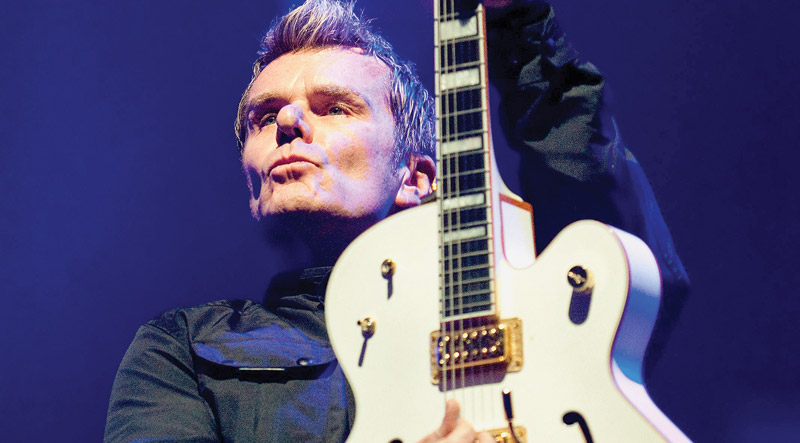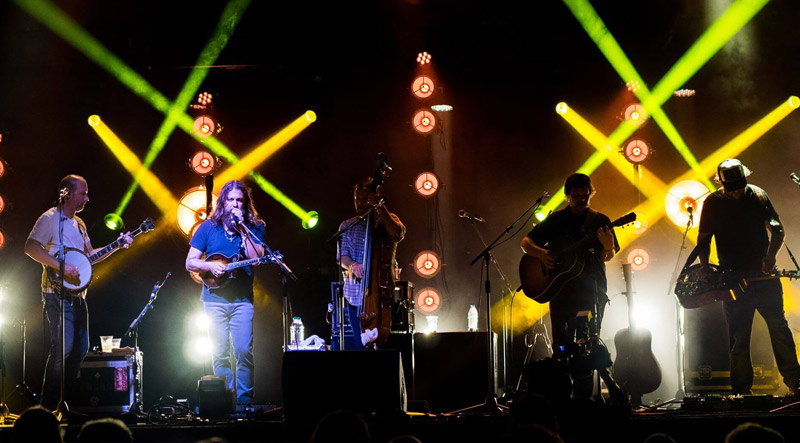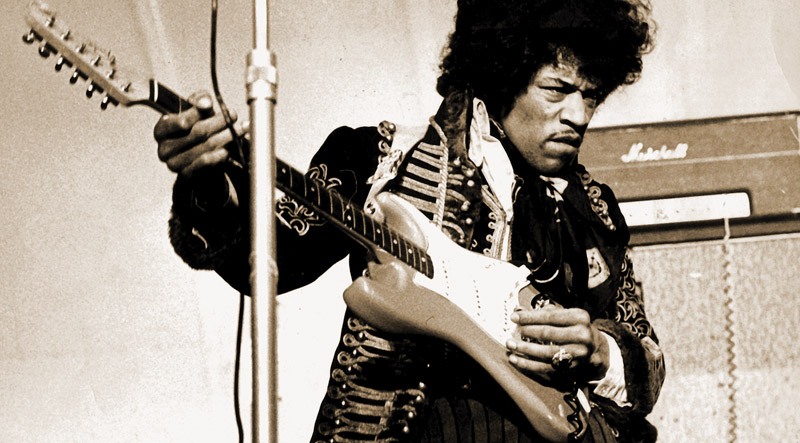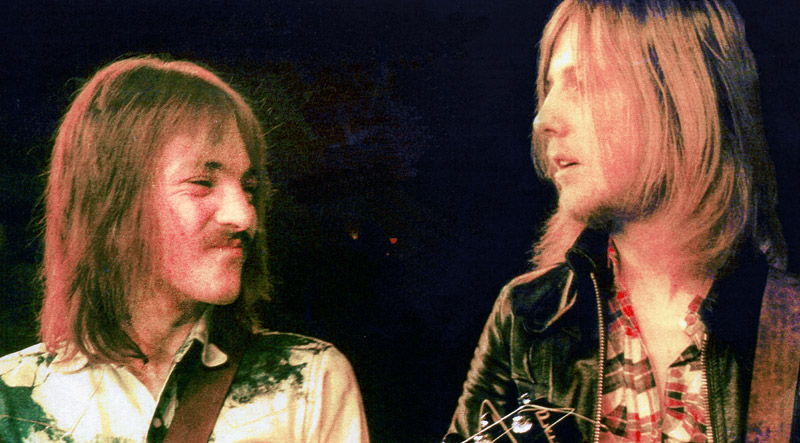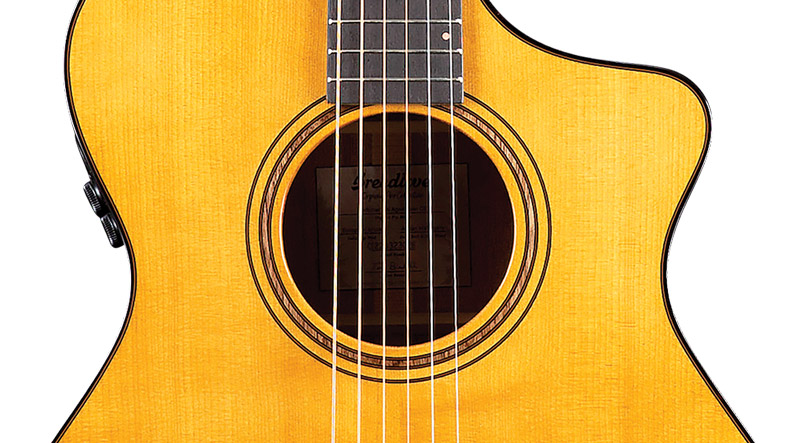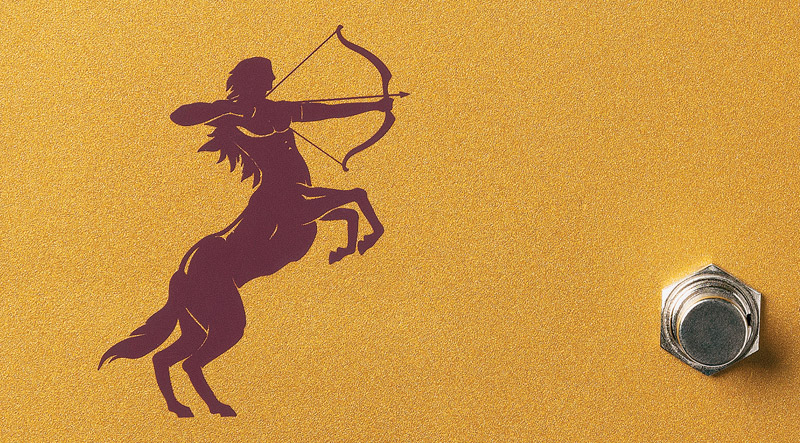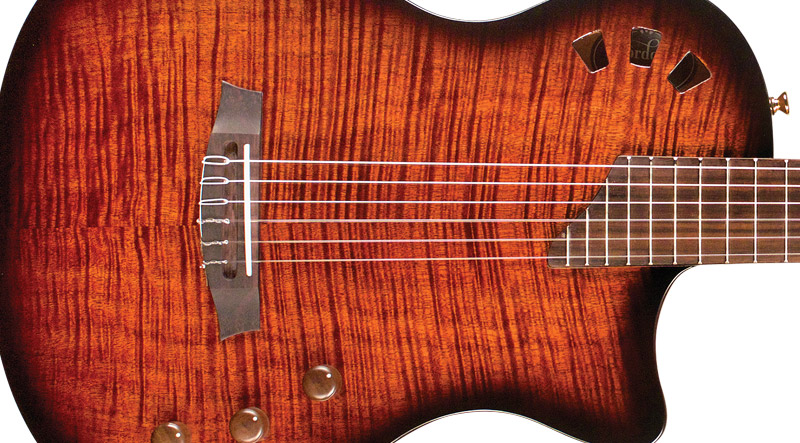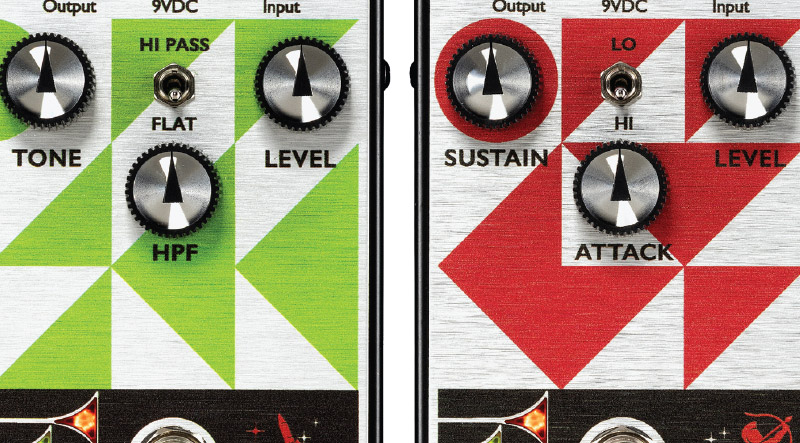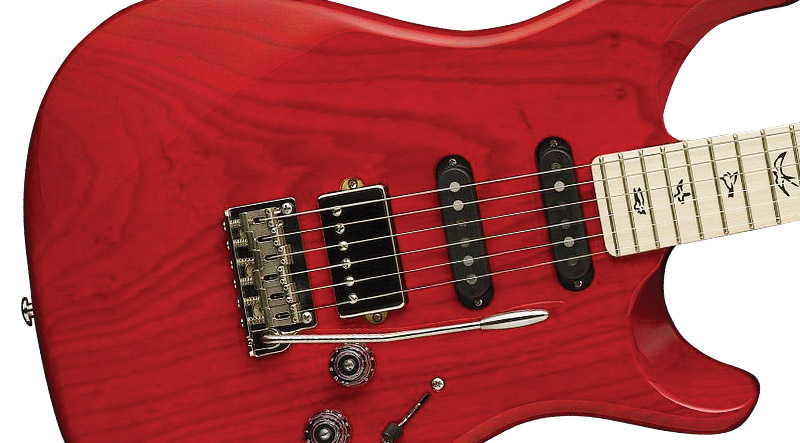
Co-founder of The Cult, Billy Duffy was Britain’s last ’80s guitar hero, with an attitude and sound that embodied the essence of rock guitar. While lauded, that X factor was misunderstood by critics.
Historically, Duffy bridged gaps between hard rock, melodic metal, punk, and alternative in an era fraught with conformity by adhering to the audacious mindset and swagger of rock, in the process giving music a much-needed kick in the bum.
William Henry Duffy, born in Manchester, England, on May 12, 1961, began playing guitar at 15 and was bred on hard rock and glam before gravitating to punk in ’76. He played with local punk band The Nosebleeds, which also included Steven Morrissey, in the process inspiring neighborhood guitarist Johnny Marr to pursue greater aspirations and encouraging Morrissey to become a frontman. Morrissey and Marr subsequently realized their goals in The Smiths.
Duffy moved to London in ’79 and immersed himself in its alternative scene while joining Theater of Hate. He met vocalist and future songwriting partner Ian Astbury when Astbury’s band, Southern Death Cult, preceded Hate at a gig. They became a musical team and by ’83, as co-leaders of the abbreviated Death Cult, and finally, The Cult, built a following on post-punk/goth-rock circuits and recorded an EP, Death Cult. Dreamtime, their debut album, was released on Beggars Banquet in August ’84. Laced with psychedelia, Duffy’s textural processed guitar parts (drawing favorable comparisons to U2 and Big Country) and references to mythology and shamanism, the record reached #21 in England and sported the single “Spiritwalker,” which hit #1 on the indie charts. Their power-rock sound and ostentatious guitar solos were at odds with alternative-inclined critics and peers but created momentum toward Love (1985), a breakthrough album produced by Steve Brown that reached #15 in the U.K. Despite subliminal goth elements and Duffy’s vestigial jangle-pop tones, Love made no pretensions about being anything other than a guitar-dominated rock effort. Viewed as anachronistic by the British music press, it nonetheless was a commercial success and trumpeted Cult’s evolving sound with the popular singles “She Sells Sanctuary,” “Rain,” and “Revolution,” and fan favorites “Love” and “Phoenix.”

Duffy is a formidable arranger. These excerpts from “Love Removal Machine” (Electric) present three aspects of his guitar-layering approach. 1) The main riff played in verses is a tight rhythm figure made of triad-based voicings and sus4 suspensions on D and C. G5 is rendered as a larger power-chord sonority exploiting open strings. Note the effective use of space (rests) throughout. 2) The chorus riff conveys a lead/rhythm approach with his mixture of first-position open chords and lower-register single-note melody. Check out Duffy’s emblematic Csus2 in the phrase. 3) His lead solo is filled with definitive Duffy elements. This sample features a cycling ostinato pattern of repeated blues-rock bends and pentatonic melody contrasted by a languorous tortured bend and a zigzagging intervallic line in D minor pentatonic that twists his blues content into a modernistic shape.
Electric (1987) continued their ascent and cemented inclusion in the ’80s classic-rock renaissance. Sessions that started in England with Brown proved unsatisfying and Duffy and Astbury found more sympathetic ears with Rick Rubin, an American producer known for rap and hip-hop but relatively inexperienced with live drums and rock guitar. Enamored of Aerosmith, Led Zeppelin, and AC/DC, Rubin found common cause with The Cult’s increasing heaviness and primal rhythms; opting for a straightforward sound with less coloration completed their shift to hard rock. They also shifted to a classic British quartet a la Zep and The Who (albeit with rotating bass/drums sidemen) and arena stars with landmark pieces like “Love Removal Machine,” “Lil’ Devil,” “Wild Flower” and remake of “Born to Be Wild.” The aptly-titled album hit #4, spending 27 weeks on U.K. charts, and cracked the U.S. Top 40.
Sonic Temple (’89) enlisted the production services of Bob Rock and proved to be their masterpiece, the realization of Duffy’s aim to “capture the essence of what a power chord felt like,” depicted boldly with the cover’s emblematic guitar-hero stance.
A balanced opus combining punk sensibilities and classic-rock intentions with improved sonics and heavier timbres spread across the stereo spectrum, it epitomizes how a Les Paul could be used, with only hints of Duffy’s previous signal processing. The album rankled critics but propelled the band into mainstream rock circles, yielding a string of hits, selling more than 1.5 million copies in the U.S., cracking Billboard’s Top 10, and reaching #3 in England, all while sidestepping hair-band formulas and misogynistic cliches in songs like “Sun King,” “Fire Woman,” “Edie (Ciao Baby)” and “Sweet Soul Sister.”
Ceremony (’91), produced by Richie Zito, reflected tensions between Duffy and Astbury and portended The Cult’s waning popularity, exacerbated by the arrival of grunge and a lawsuit over cover art delaying release. Nevertheless, it garnered Gold status in America, with Astbury’s story lines revisiting the Native-American mythos of Dreamtime while Duffy’s guitar bombast and diversity were reprised on “Hearted Son,” “If,” “Heart Full of Soul,” “Sweet Salvation” and “Ceremony.”
The Cult (’94) reinstated Rock as producer and made greater use of sonic diversity, terraced dynamics and light/dark shades. The juxtaposing of hard-rock timbres with retro and acoustic sounds reinforced the Zep connection, emphasized by the acoustic-driven “Sacred Life,” layering in “Saints Are Down,” uncommon instrumentation, wah, and fuzz in “Gone,” and heavy riffing of “Be Free.” The album reached #69 in the U.S. and #21 in Britain, prompting Duffy and Astbury to disband in ’95. With varying personnel backing, Duffy and Astbury reunited for a run (1999-2002), toured, and released three albums spaced several years apart (’07, ’12, ’16), and returned with Under the Midnight Sun in 2022.

“Sun King” is the powerful opening track on Sonic Temple. A masterful example of Duffy’s riffmaking in song context, it embodies his strategy of harnessing guitar parts to build a rock arrangement with forward motion to the chorus. 1)The verse figure is made of simple power chords and emphasizes syncopation and space. 2) The pre-chorus shifts gears with a driving hard-rock pattern of power chords broken into dyads posed above bass notes in steady eighth rhythm. 3) The chorus riff is a contrasting jangley affair with more-animated sustained arpeggiations and thematic melody lines woven into a textural phrase.
INFLUENCES
Duffy enjoys numerous influences. His playlist includes The Who, Mott the Hoople, Status Quo, Sweet, Slade, Thin Lizzy, Alice Cooper, David Bowie, Be Bop Deluxe, Roxy Music, Led Zep, Queen, AC/DC, Sex Pistols, The Clash, The Damned, New York Dolls, Montrose, and guitarists who “weren’t so obvious” including Mick Ralphs, Mick Ronson, Bill Nelson, Paul Kossoff, Johnny Thunders, Steve Jones, and James Williamson.
STYLE
In the age of high-gain noodling, two-hand-tapping, and neoclassic shred, Duffy stood as a proud emissary of classic rock. His riffs and power chording are definitive nods to the genre, while his lead lines re-shaped the stylistic DNA of Chuck Berry, Jimmy Page, and Angus Young. Consider the relentless wah assault of “Phoenix” (Love) reminiscent of Clapton’s live-Cream solos in “White Room” and “Brave Ulysses.” Or the AC/DC-inspired rhythmic pocket of “Wild Flower” and dynamic Zep-like riffs of “Automatic Blues.” The Cult was a riff-driven band since its earliest post-punk incarnations, but Duffy’s transcendent thrashing was guided by his credo that a riff must function within the song’s context and took many forms, like the ethnically-tinged theme of “American Heroes.” Self-evident are the driving rhythm phrases and punchy bass-register figures in the repertoire, but what about his strong melodic hooks played over intros, verses and choruses of songs like “Rain” and “Fire Woman”? Solid rhythm playing is a cornerstone of Duffy’s style extant in power chording, decorative (often droning) chordal arpeggiations, and single-note theme riffs – each representing a central facet of his ensemble work. He often expands root-5th power chords with colorful suspended or add2 voicings, as in “Sun King,” “Fire Woman” and “Love Removal Machine.” An evolving player, by Electric, Duffy had moved past his punk/goth influences to exploit the ethos of AC/DC, Free and Zep, eschewing the processed texturalism of Love in favor of leaner, drier hard-rock tones.
As a soloist, he is blues-based like rockers Page or Kossoff rather than a scholarly disciple of B.B. King or Buddy Guy. His solos incorporate requisite pentatonic cliches and idiomatic string bending of blues guitar, but convey an alternative attitude informed by punk and hard rock underscored by his aggressive attack, pinch harmonics, and whammy-bar dips and dives. He modifies his pentatonic mannerisms with extensions (typically adding tones from the Dorian mode), chromatic passing tones, and diatonic scalar content, all present in his “Sun King” solo. Many solos harness purposeful repetition as ostinato patterns (“Love Removal Machine”) and cycling double-stops, a tactic synonymous with rock improvisation.
Reflecting a period of deliberate practicing, Duffy’s lead work on Sonic Temple flaunted L.A.-honed technical advances, faster runs, expanded whammy-bar zaniness, and more-conspicuous metal harmonics mingled with blues-rock staples.
Onstage, he prefers to be sole guitarist, but in the studio regularly multi-tracks parts to produce his trademark wall of sound and develop orchestrations, which necessitated adding a rhythm-guitar sideman on some tours. Saturated distortion and high volume versus clean electric and lighter acoustic colors are shades he alternates consistently and thoughtfully. Case in point is the web of harmonized melody guitars, overdriven rhythm guitars, chorused lead soloing, and acoustic timbres in “Edie (Ciao Baby),” woven into a driving rock arrangement containing string parts. Also notable is his layering of three processed guitar voices in “Fire Woman”: electric arpeggiation (with slap-back echo) in the intro, 12-string chording (with modulation and delay) and slide guitar (with echo effects).

“Fire Woman” contains one of Duffy’s most emotional and memorable solos, and was a highlight of the Sonic Temple sessions. This example, played over a half-time change in feel, demonstrates technical advances permeating his lead work on the album. Notice the faster, more-complex passages incorporating the hexatonic sound (E added to expand D minor pentatonic) as well as variations in phrasing: blues-rock strandedness and vibrato, slippery legato lines contrasted by choppy staccato articulation, and extensive slurring on a single string. The transition from 2/4 to 4/4 meter and return to tempo are emphasized with a quick flurry into the highest register, producing a dramatic climax to the solo.
Effects play a substantial role in Duffy’s style. The intro to “She Sells Sanctuary” is a definitive early example with its background sci-fi soundscape featuring a heavily processed orchestration created with opulent distortion and modulation/delay effects over which he plays a chiming arpeggiated theme colored with delay and modulation.
ESSENTIAL LISTENING
Sonic Temple, Electric, and Love are undisputed Cult classics of the ‘80s. Pure Cult is a serviceable collection while Rare Cult provides a deeper dive.
ESSENTIAL VIEWING
Cult fans will want to compare two live versions (MTV awards ’89 and Milwaukee ’22) of “Fire Woman” online. Also recommended are Live at the Ritz (’85), Live on BBC (’87) and Duffy’s 2014 Sweetwater interview.
SOUND
Duffy adopted and exploited a hollowbody Gretsch with Bigsby tailpiece as a hard-rock instrument on The Cult’s early albums, when his sound emanated from a ’75 White Falcon acquired in ’81. He stuffed its body with cloth or foam, taped the sound holes from inside to reduce feedback, and pinned the floating bridge. By ’89, he favored Gibson Les Paul Customs (some with Floyd Rose vibrato systems) fitted with Duncan Jeff Beck pickups. His primary instrument was a stripped-finish ’78. More recently, he has preferred a black Les Paul Custom, reissues of a ’58 Standard, TV Junior, and ’57 goldtop, silver-sparkle Gretsch White Falcon and Black Falcon G7593T Duffy signature models, or Stephen Stern-built copies of his “Sanctuary” Falcon, all strung with Ernie Ball .011-.048 Power Slinkys. His recording guitars include an early-’60s Strat for clean tones, Nash relic Esquires, a Performance Guitar “Stonehenge model” superstrat for alternate lead sounds, and Gibson J-200 and Guild F-412 acoustics.
Duffy has used a variety of amps. Early on, Marshalls were the norm for distorted tones while cleans (“Fire Woman”) came from a Roland JC-120. On The Cult, he employed gems from Rock’s collection – a Gibson Skylark, Fender Champ, tweed Bassman, Matchless DC-30, Peavey 5150, and modified Marshall JCM 800s. In 2015, he played a Marshall 1973X combo in the studio, and onstage incorporated a Chinese-built Vox AC30 along with his JC-120 (miked for stereo chorusing) and favored Friedman heads with Marshall slant cabs.
An exponent of effects pedals (analog and digital), Duffy employed Boss and MXR delay/phasing/modulation stompboxes and Crybaby wah during Dreamtime, Love, and Electric. After Sonic Temple, he consolidated effects in a Bradshaw system, using only a Boss Super Overdrive, Crybaby and Morley wahs (the second as an EQ/filter) and other processors for clean/dirty amp signal paths with a MIDI switcher. His distortion came from a Harry Colby-modded 100-watt Marshall head and 4×12 cab while his clean path utilized a stock Marshall head and 4×12 into racked units – two Korg 2000 delays, two Yamaha SPX90s, TC chorus, Boss Flanger, MXR Phase 100, and 400-watt H&H power amp driving four cabinets in stereo. In ’94, he experimented with vintage Vox wahs and Fuzz Face (prominent on “Gone”), and in the 2000s reverted to a simpler pedalboard with Boss stompboxes, Dunlop Duffy Cry Baby wah with 10db boost, Uchida treble booster, Ibanez Tube Screamer and Kalamazoo overdrives, and a Tripler amp selector.
Wolf Marshall is the founder and original editor-in-chief of GuitarOne magazine. A respected author and columnist, he has been influential in contemporary music education since the early 1980s. His books include 101 Must-Know Rock Licks, B.B. King: the Definitive Collection, and Best of Jazz Guitar, and a list credits can be found at wolfmarshall.com.
This article originally appeared in VG’s February 2023 issue. All copyrights are by the author and Vintage Guitar magazine. Unauthorized replication or use is strictly prohibited.

